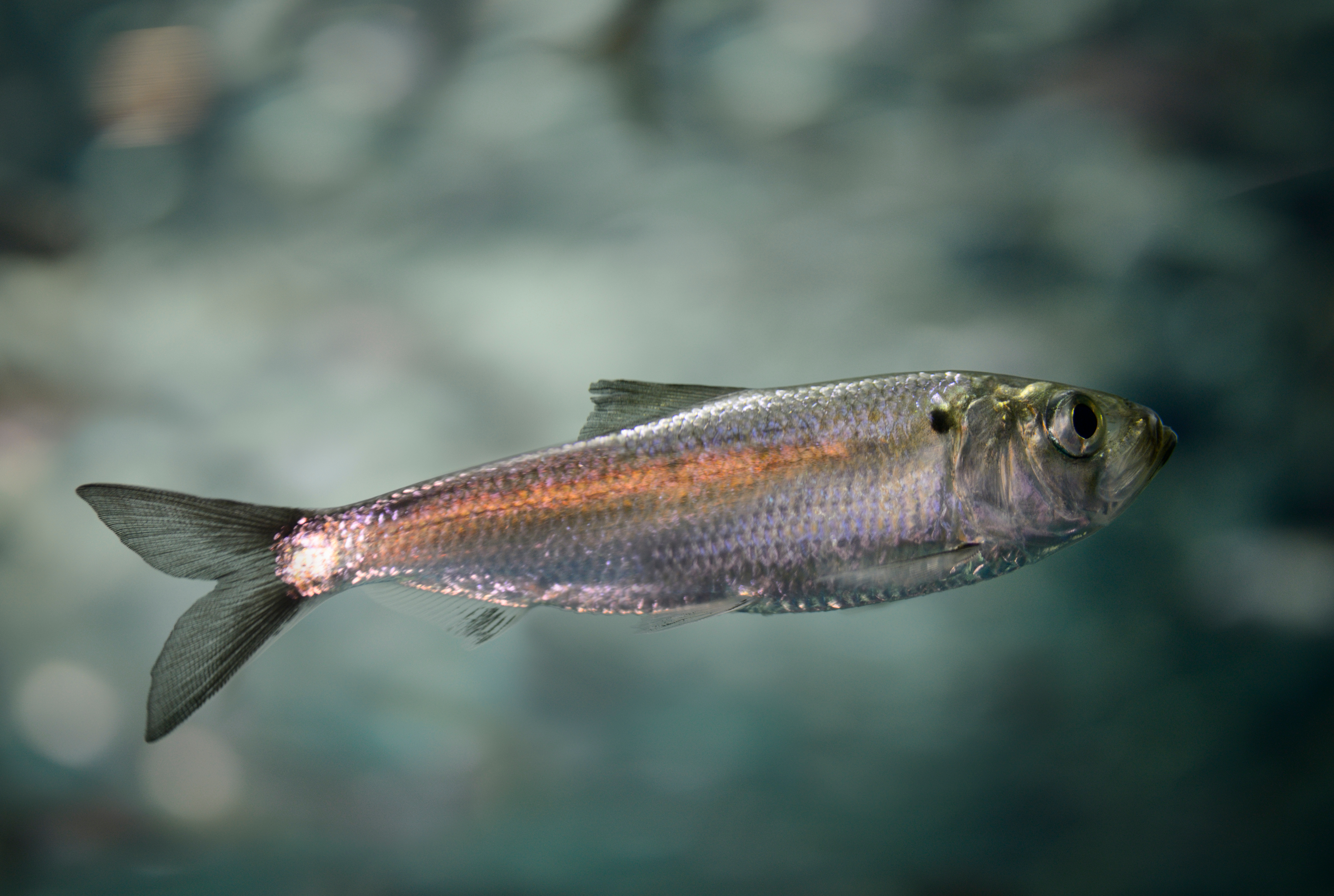Alewife
(Alosa pseudoharengus)

Description
The alewife (Alosa pseudoharengus) is an anadromous species of herring found in North America. It is one of the "typical" North American shads, attributed to the subgenus Pomolobus of the genus Alosa. As an adult it is a marine species found in the northern West Atlantic Ocean, moving into estuaries before swimming upstream to breed in freshwater habitats, but some populations live entirely in fresh water. It is best known for its invasion of the Great Lakes by using the Welland Canal to bypass Niagara Falls. Here, its population surged, peaking between the 1950s and 1980s to the detriment of many native species of fish. In an effort to control them biologically, Pacific salmon were introduced, only partially successfully. As a marine fish, the alewife is a US National Marine Fisheries Service "Species of Concern". Alewife reach a maximum length of about 40 cm (16 in), but have an average length of about 25 cm (10 in). The front of the body is deep and larger than other fish found in the same waters, and its common name is said to come from comparison with a corpulent female tavernkeeper ("ale-wife"). Alewife are known for their invasion of the Great Lakes by using the Welland Canal to bypass Niagara Falls. Alewife colonized the Great Lakes and became abundant mostly in Lake Huron and Lake Michigan. They reached their peak abundance from the 1950s through the 1980s. Alewife grew in number unchecked because the lakes lacked a top predator (lake trout were essentially wiped out around the same time by overfishing and the invasion of the sea lamprey). For a time, alewife, which often exhibit seasonal die-offs, washed up in windrows on the shorelines of the Great Lakes. Various species of Pacific salmon (first coho, and later the Chinook salmon) were introduced as predators. Though marginally successful, this led to the development of a salmon/alewife fishery popular with many sport anglers. In spite of such biological control methods, alewife remain implicated in the decline of many native Great Lakes species. It is also a common predator of numerous native and non-native zooplankton taxa (Bythotrephes longimanus, Leptodiaptomus ashlandi, Leptodiaptomus minutus, Leptodiaptomus sicilis, and Leptodora kindtii). Alewife populations have seen big declines throughout much of their range.
Taxonomic tree:







